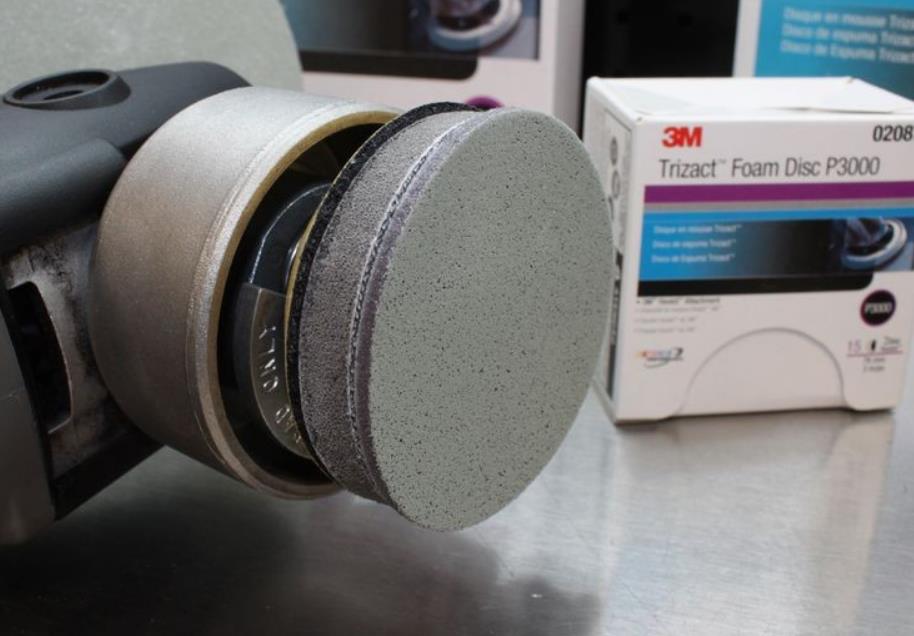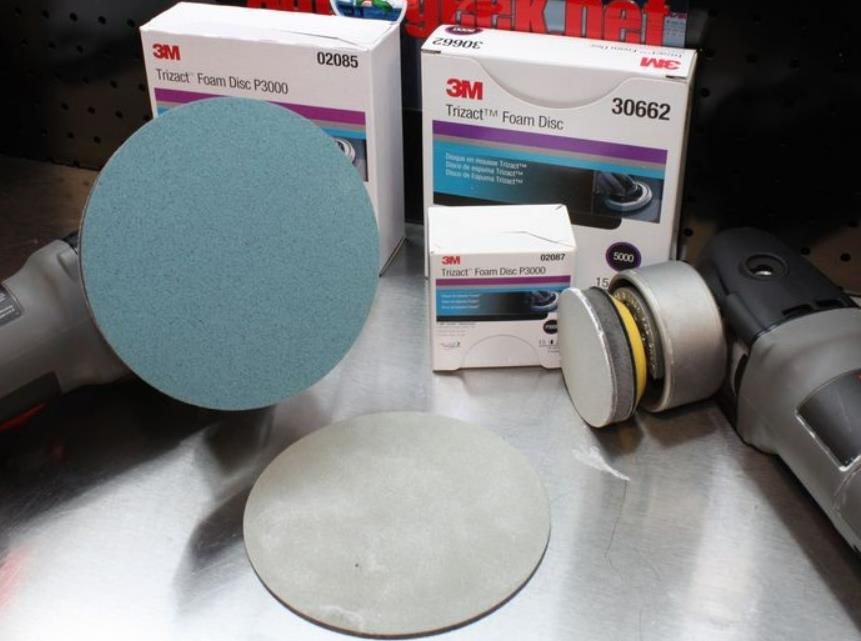“How do I sand my woodwork with sandpaper and how long do I sand for each time?”
“What are the main categories of sandpaper? What brand can be recommended?”
“Why does the grit of sandpaper have to get progressively larger when sanding, can’t you just use fine sandpaper?”
Whether you choose an “electric sander” or manual sanding, choosing the correct type and grit of sandpaper is an essential part of perfecting your woodwork.

Grit size of 3m trizact 3000 sandpaper
Sandpaper is not made from sand, but from fine particles of natural or synthetic origin. The particles are sifted through a screen and categorized by size, then bonded with an adhesive to a paper, sponge, or cloth-type backing to create an abrasive that can be used on its own.
Each project has different requirements, so it is important to differentiate between sandpaper grit sizes.
In the United States, the grit size of sandpaper is based on a grade scale established by the Coated Abrasive Manufacturers Institute (CAMI) and is expressed in “mesh” units. When we buy sandpaper, we see numbers like 80 mesh, 100 mesh or 200 mesh.
This means:
The higher the number, the smaller the particles and the finer the grit of the sandpaper.
Conversely, lower numbers indicate larger grains and overall rougher sandpaper.
CAMI measures sandpaper grit size in “microns”, so to understand the concept of microns, we can examine a piece of 100 grit sandpaper. Small particles on sandpaper measure about 141 microns, which is very small.
However, the 3m trizact 3000 sandpaper you buy may meet the CAMI standard or it may meet the standard of the Federation of European Abrasive Producers (FEPA). Particle sizes that meet FEPA standards are indicated by the initial “P” for “Particle”.
Selecting the correct coarseness
To make it easier for people to choose, the manufacturer, in addition to specifying the grade, also identifies a “roughness grade” on the package. This is actually a range of grit sizes that apply to similar sanding jobs.
In fact, most woodworking projects only require a certain grit level of 3m trizact 3000 sandpaper, not a specific grit, so it’s important to know what each grade applies to.
Ultra-coarse sandpaper ranges in grit size from 24 to 36 grit and is used to remove hard-to-remove paints and varnishes.
Coarse sandpaper’s strengths are roughing up wood and removing finishes, such as light-colored urethane coatings. Coarse grit is usually in the 40 to 50 grit range.
Medium grit sandpaper, in the 60 to 100 grit range, is for the final sanding before painting. Often we also use medium grit sandpaper for initial sanding of rough wood to remove planning marks from the wood.
Fine grit sandpaper ranges from 120 to 220 grit. For most home workshops, this 3m trizact 3000 sandpaper is sufficient for a final sanding before the job is finished.
Ultra-fine sandpaper is often used between coats of paint or varnish. 240 mesh, 320 mesh, and 400 mesh abrasives are known as very fine abrasives, and extra- or ultra-fine abrasives with grit sizes as high as 600 mesh are best suited for buffing jobs.

Selection of grit material
Factors that affect the success of sanding contain not only the level of grit size of the sandpaper, but also the type of abrasive.
Certain types of grit particles are better suited for smooth and sandy types of materials (e.g., wood vs. metal).
Most manufacturers list the types of materials best suited for sanding on their product labels, but it’s much more helpful for wood crafting to be able to clarify the type of material the 3m trizact 3000 sandpaper is made of before we shop.
- Diamantine: Natural grained, emery 3m trizact 3000 sandpaper is often used to remove corrosion and polish steel and other metals. The edges of its grains may be too sharp for sanding wood.
- Garnet: Another natural grain, garnet is slightly softer than emery and has rounded edges that produce a smoother finish, but this also means that sanding is slower and the paper will wear out faster, making it an excellent choice for final sanding.
- Aluminum Zirconia Oxide: This synthetic grit is durable and perfect for grinding burrs on metal and for initial rough sanding of wood. When sanding metal with zirconium oxide aluminum oxide, the grit actually gets sharper so you don’t have to change 3m trizact 3000 sandpaper as often.
- Aluminum Oxide: Aluminum Oxide is a very durable synthetic grit that is great for sanding and polishing all types of metals, including bronze and alloy steel, as well as another common sandpaper type used for woodworking projects. This is the most common type of paper used in power sanders. Aluminum oxide is more durable than garnet paper, but does not provide as good a finish.
- Silicon Carbide: Silicon Carbide is a very hard abrasive that is primarily used for finishing or “wet sanding” metals using water as a lubricant. Although silicon carbide paper is used for some fine finishes, it is not usually used by woodworkers and can be used for sanding metal woodworking tools.
- Ceramic: Ceramic is a very hard abrasive. It can be used to quickly remove wood, such as in belt sanders and sanders. It is durable and expensive, but does not produce a very smooth surface, so be especially careful when using ceramic 3m trizact 3000 sandpaper, especially on plywood and veneers, where they will quickly sand the surface layer and damage the top layer.







